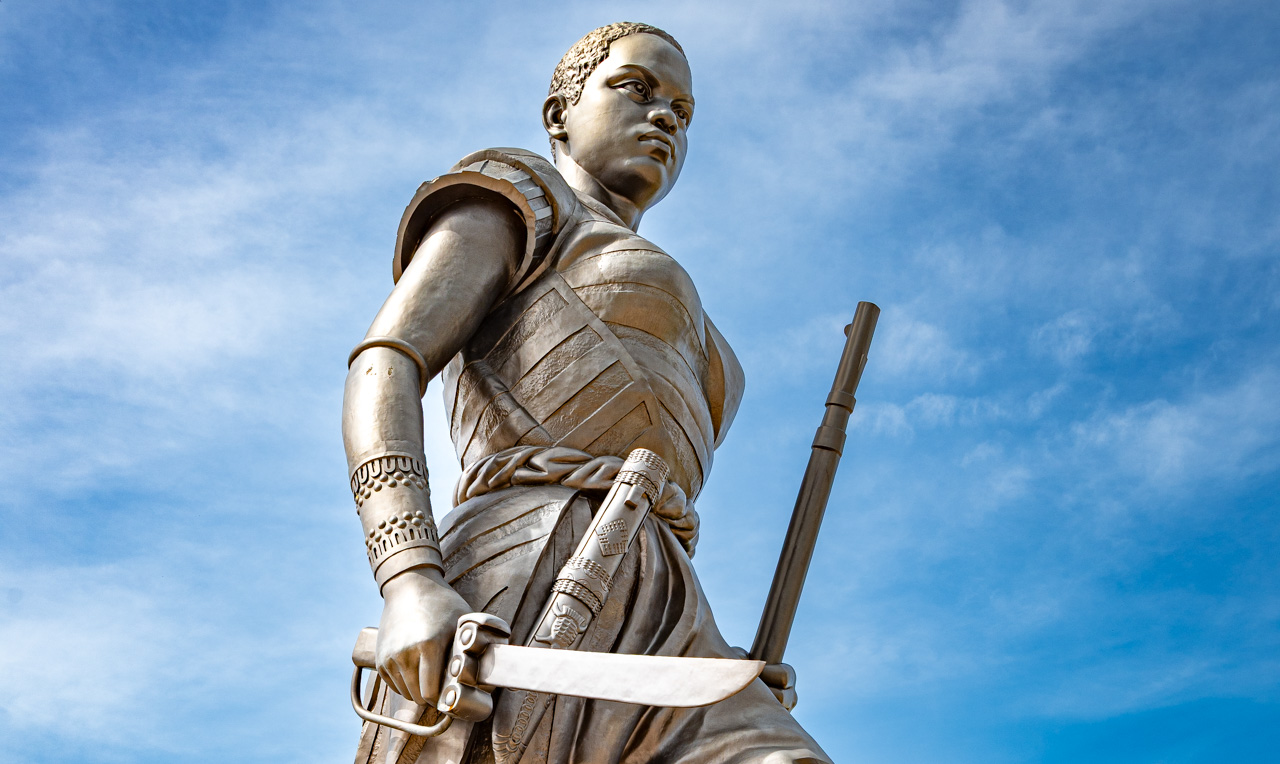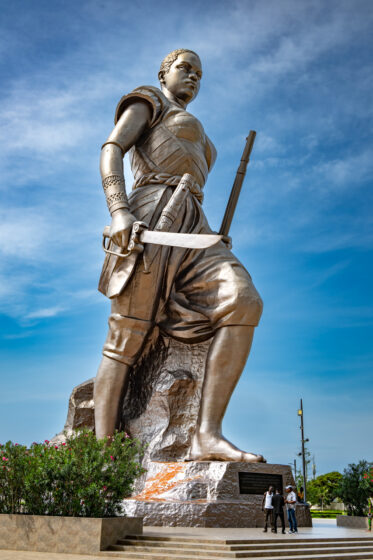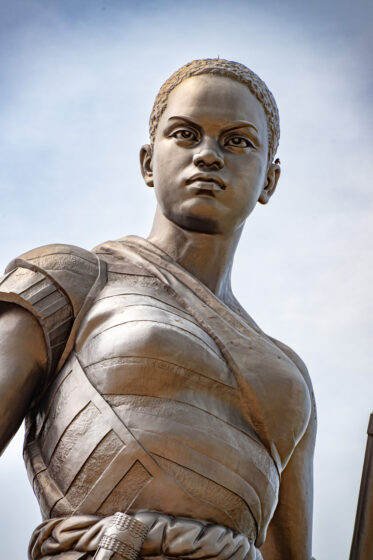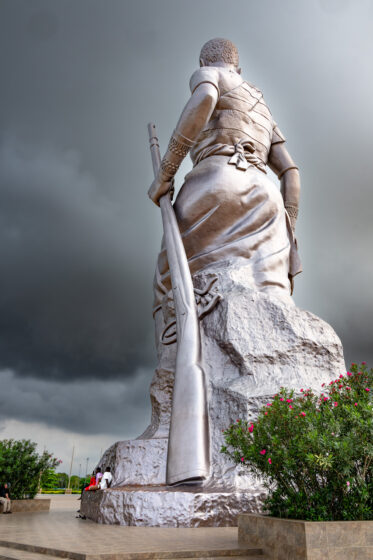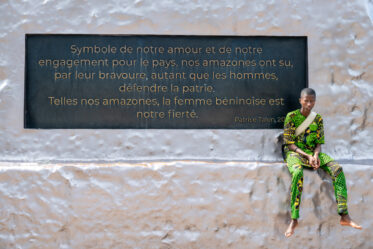The mouth of the Ouémé River in Benin was historically quite a treacherous place with dangerous currents which took many lives. Yet the settlers and traders built a fishing village at the mouth and that village has now grown to be Benin’s largest city. French colonists liked the location and stablised the currents and built a port to export Benin’s riches, including palm oil and slaves.
The locals called the area Kútɔ̀nú in their Fon language, which means by the river of death. The French put their lingual twist on the name and the city became Cotonou.
My mate from my ICARDA and Syrian days, Scott Christiansen, and I are on a consultancy for the Crop Trust’s BOLDER project. In the next few months, we’ll visit four African countries and document research on the value chains of opportunity crops. First stop is Benin where we’re learning about fonio and jute mallow.
We shook off our jet lag by taking a Sunday morning walk to view Cotonou’s Monument Amazone. It was a fitting introduction to a country that neither Scott nor I had visited. The Amazon Monument is a tribute to the Dahomey Amazons, who were a famed all-female military corps that was active between the 17th and 19th centuries in the Kingdom of Dahomey. The Amazons were used as royal guards and battle troops for military expansions under various kings.
The 30-metre tall statue was unveiled in 2022 and is seen as an act to reclaim Benin’s pre-colonial history and a way to reassert national identity and pride as well as the important role of women.
Scott and I will travel north to Atacora on Tuesday. I don’t think we’ll encounter any Amazons but we surely will encounter some equally impressive women who are working hard to promote fonio and jute mallow as a nutritious and climate-resilient crops.

